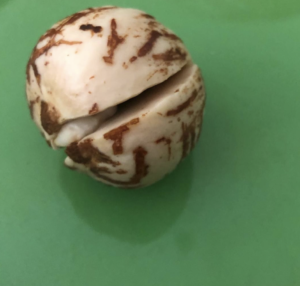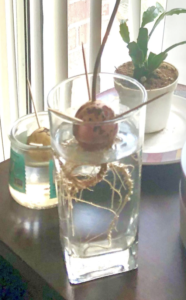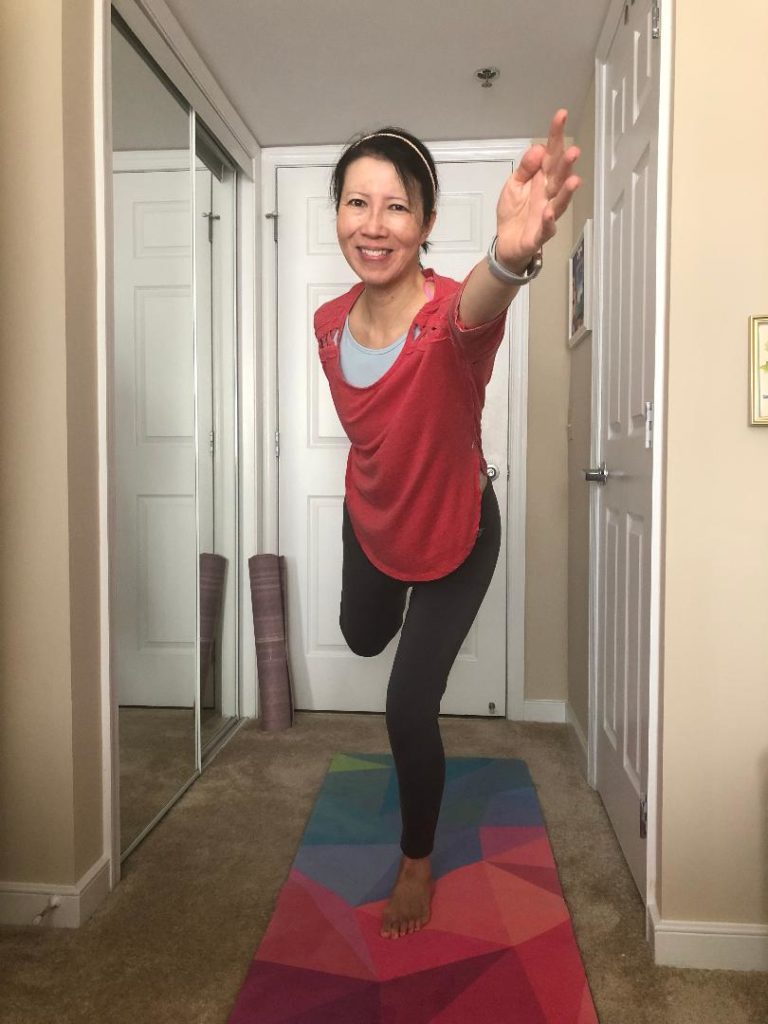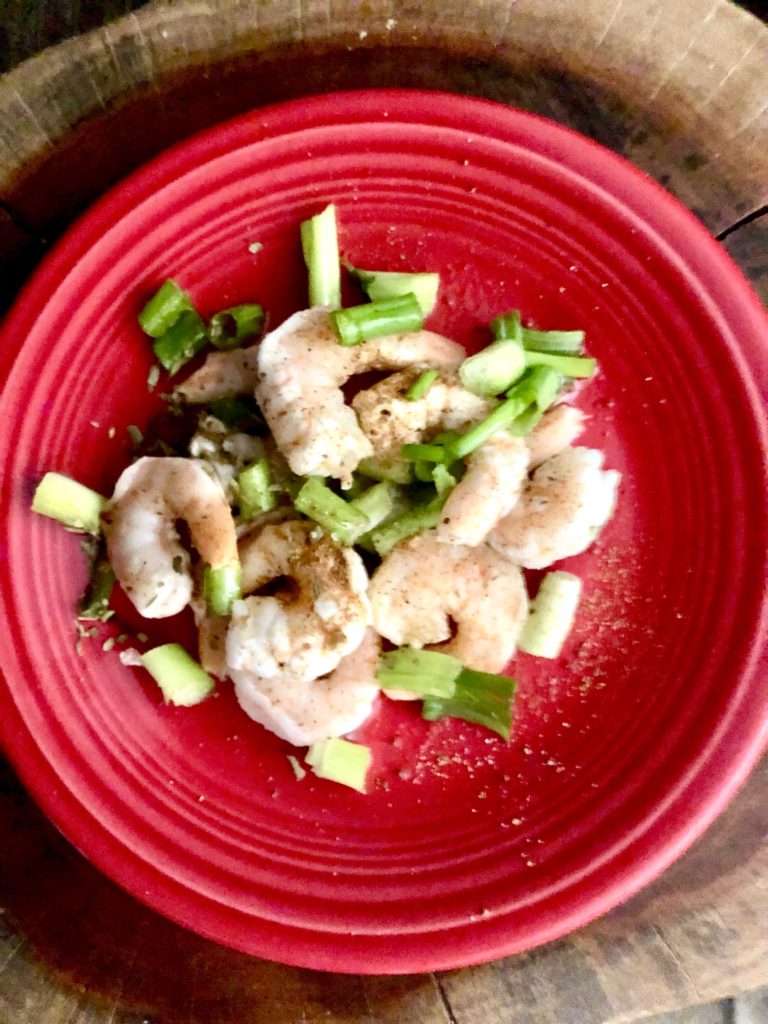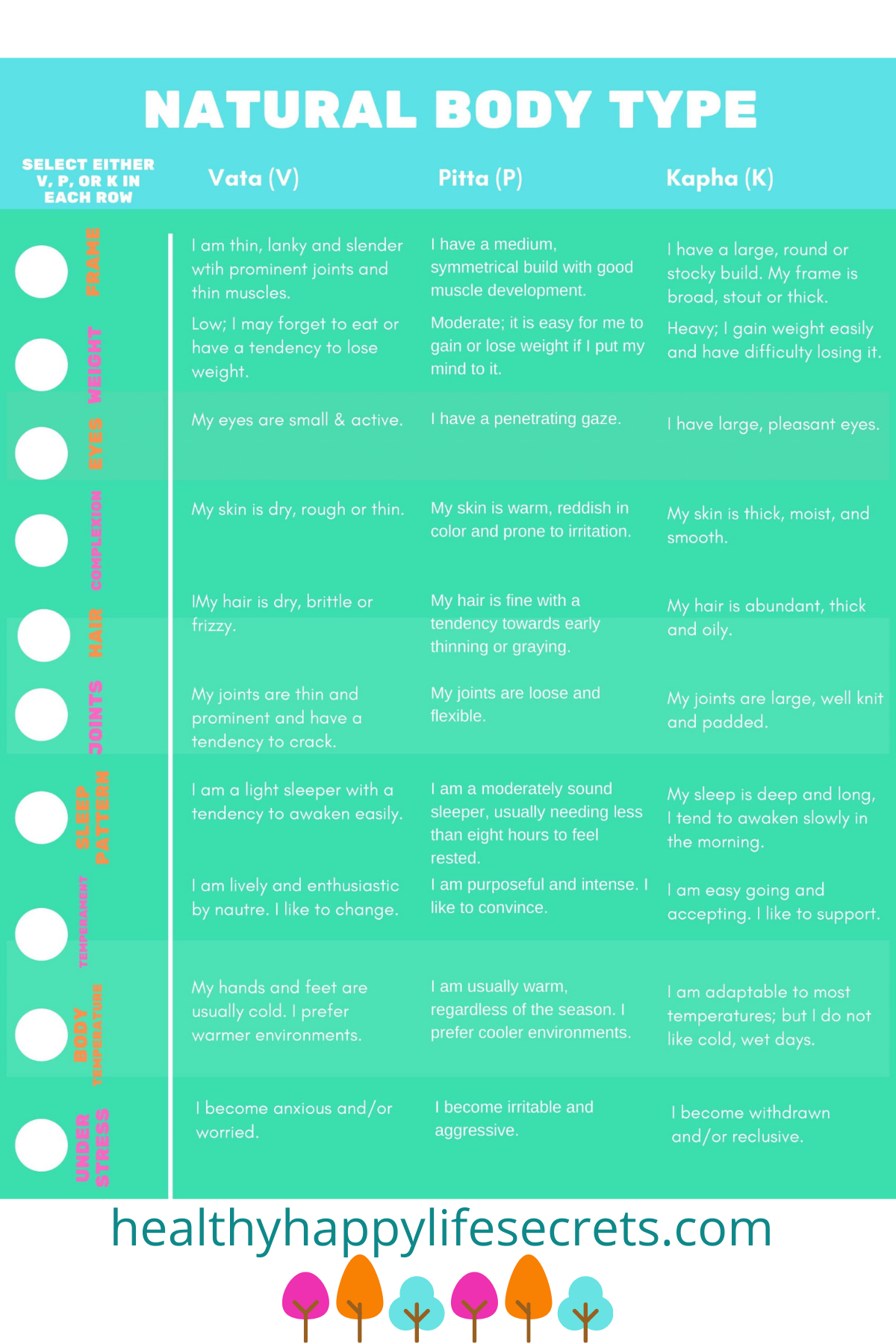Accumulating is a Kapha heavy natural trait that can turn into accumulating stuff, weight, and bad habits. BUT you can turn the tide with healthy habits when you know how to restore the Kapha mind using your 5 senses in your body!
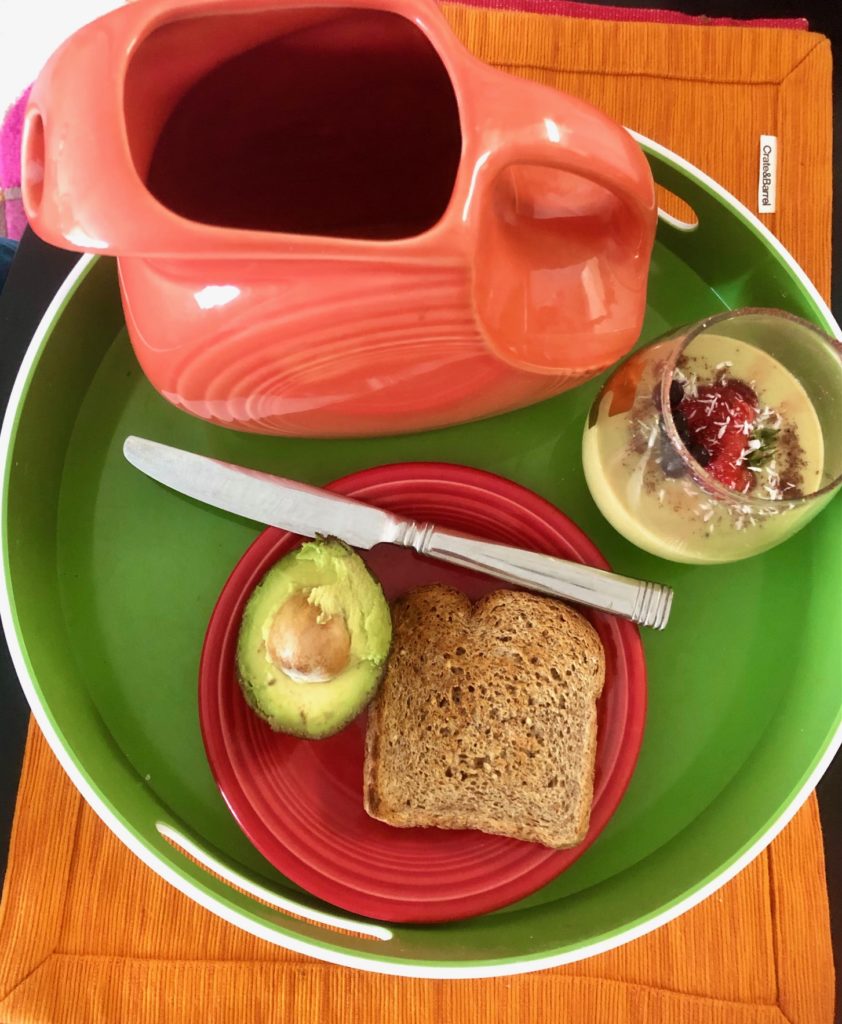
In winter months, it’s easy to start accumulating for any of us… and one healthy move is growing something green even when you have a brown thumb. Details are below 👇 on how to easily grow a year-round avocado seed to a plant that can serve as a healthy reminder on your bookshelf. 🥑
I once had a maintenance worker who was curious about my avocado babies (I had several around my apartment) and I explained how easy it is to grow this plant from a seed after you’ve enjoyed your avocado toast and smoothie. I suppose they would make happy gifts too. 🌱
…Now that’s accumulating points! And so is a wellness, balanced approach that’s more sustainable and healthy (and is what this week is all about)…
And the reason I prefer a wellness new year over a hard list of rules and resolutions. I believe in positive reinforcement and being easy on yourself is motivating.
That’s how it is for most of us striving for balance. Sometimes it is two steps back, and one step forward. In a year that can be a big difference, and amazingly undescribable in a decade.
When you set the bar low and you make progress (over perfection), then you have an optimistic outlook, want to do more, and that leads to success in the areas you’re working on.
That’s what happened when I started on 6 minutes of cardio a day which has now turned into 8 minutes or more. That may be light or a lot for you… but just sayin’ it’s not easy for a Vata to like cardio.🧘🏻♀️ That’s work. And for Kapha, that can be yoga or not eating.
Whatever that tough activity is for you, your progress is all that counts. If you purposefully stand for another minute when you would’ve sat down, that’s a positive move. 🎉
All of that is accumulating in a good way that helps with healthy energy where body-mind balance thrives. It’s in the small moves and micro habits.
And then you can see what the optimized life can be all about… when you’re self-controlled and calm (that’s counter cultural in our busy society) …and then get to your deeply creative self where you find meaning and purpose.
That can start by enjoying a healthy dose of time in self-love and building up self-esteem.
An easy way is standing in front of the mirror which seems to grow less important as we age. We can nitpick on an area we don’t like… but that doesn’t have to happen!
We can change why we look in the mirror.
It’s a good idea to find ways to build and love yourself up. And actually, the first chapter in my published book Empowered Happiness is all about ways to focus on loving yourself first, and keeping that priority first.
All your happy and healthy energy adds up and builds deeper confidence and happiness within you as you build up your deeper self that I believe life is meant to be about.
There’s so much more to us than meets the eye or when we first started out as adults.
And both our outer and inner selves are so important for running around healthy in this forever-changing world. Our mind-body connection is the gateway that runs deep alongside us taking in cues from our thoughts and feelings affecting us and our day. This point is often missed so it’s a hidden secret from us until we are aware.
The interconnected mind-body sends daily signals we can’t see and affects how we behave. If we are holding onto past trauma, this can shows up in our mind-body.
Some signals we receive are loud, and some are subtle.
And when you comply with the signs, your mind-body loves that and can show you by making more happy hormones that you can feel in your daily life as accomplishment or a warm feeling.
And if your goal is to improve daily mental health areas, then healthy habits like getting mindful in the moment, doing yoga to set intentions and balance, and changing negative thoughts regularly are daily game changers.
And if that becomes how you operate in life, those are also accumulating habit life game changers.
Another win can be in body goals to lose accumulating weight from last year and holidays.
One of the ways is to enjoy healthy foods as they often come with less calories and better nutrition, like cups of broccoli with a little flavoring. One of my favorites is edamame with a tad of coarse sea salt.
And one of my health wellness desires is to go more plant-based and add more veggies. …You too? 🙋🏻♀️ It’s good for the additional energy and nutrients that we all can use more of, Vata and Kapha alike.
And if you’re a natural Kapha body, healthy foods and veggies could also be part of the plan to sustainably maintain a comfortable dress size that sticks. That makes picking out clothes in the closet easier. And Kaphas often fluctuate in clothing size variety.
While Vatas lean toward wanting variety, so often there are a lot of clothing choices by choice. And that can be a different problem not in belt size, but in the wallet.
Either are self-controllable if we better balance our Vata mind and Kapha body and mind. And remember, we all have traces of Vata and Kapha even if they’re not dominant in us. And they can get out of balance at the drop of a hat or if our life situation changes.
But whatever your current scenario is…
It’s always easier to say what needs to happen to restore, but it’s not always easy to do as life can be hard…
There are too many ups and downs in life that lead us to food as the immediate soothing comfort blanket. Or our shopping habits to make us feel better.
Since we were a child, we’ve had a relationship with how our clothing made us feel more confident. And with certain foods that still light up our faces. But as adults, don’t show up on our bodies in a way that lights us up. 😏
And cutting out foods and food groups to cut calories doesn’t always work in the life long term. It’s hard to sustain unless you live around others who do the exact same to support your efforts. Or you live a slow, stress-free life. And that’s not usually the bubble we live in if we’re working and have busy lives.
With new situations come new situations to juggle in different seasons. And rarely if ever do you have the exact same situation triggers. It takes discernment.
Each situation can look different in disguise of the same effect, so it can take a few times to catch on to pinpoint our stressors. It’s easier for us to just make them go away with food and clothes buying, but then we pay the price.
A better way is…
Seeking a daily-balanced approach that can get you back on track (as you know when you’re off balance). You can use balance as your new comfort…
Balancing your Vatas and Kaphas (and occasional Pittas) can be your daily way.
With food, I started out working long hours in hotel catering planning for clients. And then in some foodie restaurants doing the same. I didn’t eat good for my body…
I ate well, but not always healthy. I definitely didn’t count calories or look at nutrition information as none was available with the hidden sauce calories and still isn’t published in those types of venues (like you find today at fast food joints).
And when I wasn’t in the food work lifestyle seasons, I was doing other work and I had a greater healthy eating balance.
No-frills home eating is actually my favorite (and I’ve had plenty of good food tastings and work experiences in catering event planning). And most of us have spent more time at home over the past couple of years.
You may have slid or improved your diet. What helped me was focusing on simple and tasty, healthy grocery foods and home-cooked dishes that I felt better about than food with amazing reviews!
And that helps with keeping calories low and the body running more efficiently and happily.
When you eat healthy, whole, and organic foods, you’re accumulating healthy points and healthy habits for life.
You appreciate the food’s natural tastes. Like avocado has a very pleasant taste. And then when you add 2-3 complementary flavors ontop of sprouted toast and tomatoes, that just takes it up a whole ‘nother level. And it’s so easy to put together and is as good and fresh (or better) than takeout. 🥑
The simple rocks!
And as much as I still love the French recipe cookbooks that helped paved the way to tastier catering meals like the ones described in Julie and Julia movie, some recipes still have over 20 ingredients, that’s not practical or easy for most of us modern-day people to whip up.
It’s meant for the competing Bobby Flay chefs out there in the world to prepare, but then you’re looking at calories again. So, a homemade simple but zhughed up healthy recipe is the best of both worlds.
…And you save time if you keep your recipes simple. And that your tastes will agree with. Because if it doesn’t taste good, then what would be the point of preparation?
But you can try a taste switcheroo. Like reaching for alfalfa sprouts or radishes instead of a sweet pastry thing that doesn’t go well with your green tea.😉
Just a thought and something sweet (that’s not sugar), and green to nosh over.
And from there, you could also lean into flavoring lentils or no-muss, no-fuss healthy leftovers that can be a meal anytime in the day. That lets you escape the urge to reach for a filler something that isn’t doing your body any healthy favors.
All of that is accumulating good wellness eating habits that you can stack, and can be part of the new year and your optimized-balanced health!
“The roots go down and the plant goes up and nobody really knows how or why.” – All I Need To Know I Learned In Kindergarten
Grow an Easy Avocado Plant
Materials
- drinking container or glass
- toothpicks
- paper towel
Instructions
- Clean off your seed. Larger round to medium seeds work better.
- Peel off the brown outer layer so you see the bare seed flesh that has a peachy flesh color. Tip: Do this when before you go to the nail salon as you will need to use your finger nails. Knives and sharp objects won't do the job without damaging the seed. It may be easier to wet soak the outer layer first to make it easier to peel off.
- Take partial paper towel and full soak seed with water. Wrap around the entire seed, but don't leave too much excess paper.
- Place the seed in a sealed plastic bag (works best) and set in a darker, cool room temperature place in a place you don't forget about.
- When the paper towel starts to dry out over the days, moisten with fresh filtered water. Keep repeating this step. One day you will see a middle crack in the seed. This is to allow the root to sprout and grow that can take a few weeks. Be patient! And if your seed crack breaks the seed (no worries and don't give up), keep the seed half that has the root.
- When you see an obvious root bud growing, you can place 3 toothpicks evenly around the seed and set in a drinking glass or container with a rim. Glass works nicely so you can see the roots from the outside. Then add water so the bottom and middle of the seed is "bathing" in the water, but the top of the seed does not need to be submerged in water.
- Over more weeks, you will see a green stem grow upward and eventually leaves will sprout (months later). Enjoy and keep adding water to your glass as your seed roots are thirsty. The roots will eventually outgrow the glass where you may then choose to transplant to a larger vessel. This is a great easy project for the Kindergardener in each of us where the roots go down and the plant goes up!



